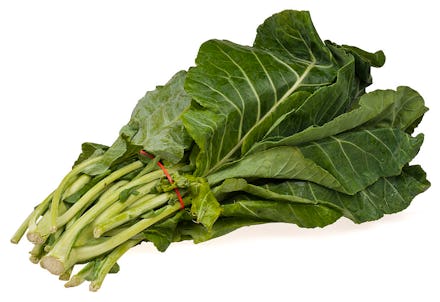Must-Have Foods That Can Help Lower Blood Pressure Naturally

Foods high in sodium and saturated fats, although tasty, can be responsible for heightened blood pressure, according to the World Health Organization. Pizza, fried meals, cakes and bacon are just a few of the many types of foods that contain high levels of saturated fats.
"You eat those things, and the particles of saturated fat get into your blood and make it thicker – more like grease and less like water," Neal Barnard, founding president of the Physicians Committee for Responsible Medicine, told U.S. News and World Report in 2014. "So the heart has to push to get this sludgy blood moving, and that's why blood pressure goes up."
Fortunately, foods that can help reduce blood pressure naturally exist, and they're all around you.
Read more: These Are the Foods That Will Make You Better in Bed, According to Science
Eat green! Vegetables, specifically green, leafy plants like spinach, have healthy amounts of calcium and iron. "Vary the types of fruit and vegetables you eat. Each has different health benefits and it will keep your meals interesting," according to Blood Pressure U.K. "By eating a wide range of fruit and vegetables, you will ensure that your body is getting all the nutrients it needs."
In order to get the most nutrients out of the vegetables, the group encourages eating fresh fruit and vegetables as soon as you can. The foods will lose nutrients as time passes. The best way to preserve the vitamins and nutrients within is to either freeze the green foods, or purchase them frozen. Plants, in their natural state, are extremely low in sodium and high in other nutrients. Kale, considered by many to be a superfood, is a good example.
Chocolate helps! According to the American Association of Retired Persons (AARP), consuming a 1 oz square of dark chocolate every day may help lower blood pressure, a Harvard study found. Dark chocolate is rich in flavonoids, which helps boost the body's blood vessels ability to dilate, or widen. However, simply consuming an increased amount of chocolate alone won't do the trick.
"Chocolate is not magical and does not work in isolation," Linda Van Horn, professor of preventive medicine at Northwestern University's Feinberg School of Medicine, told the AARP. A balanced diet, with loads of fruits, vegetables, fiber and "a little chocolate," is the best option.
Add a variety of fruits to your diet. Bananas are rich in potassium. According to the 2010 Dietary Guidelines for Americans, an increased amount of potassium in the diet of a person suffering from hypertension, can be beneficial, Health.com reported. But any variety of fruits will help reduce blood pressure.
"You don't have to sit down and eat six oranges," Barnard told U.S. News. "It can be oranges and apples and tangerines and plums and raisins – even juices." Prevention offered a tip, "No need to toss soft bananas when the skin turns brown. Peel, bag, and freeze for use in smoothies."
Stock up on beans, nuts, seeds and whole grains.
Beans have no cholesterol and little fat, according to U.S. News. This means that the fruit, (yes, beans are technically a fruit) could have the ability to lower blood pressure levels.
"We know from our previous research that foods low on the glycemic index scale are helpful in lowering blood glucose levels," Dr. David Jenkins, director of the St. Michael's Hospital's Risk Factor Modification Centre, said in a statement, according to The Huffington Post. "But this is the first study of its kind to specially look at legumes' effect on cardiovascular risk factors and find they also have a blood pressure lowering effect in diabetic patients."
Whole grains, like rice, bread, or cereal, along with pistachios and flaxseed, should also be added to the diet, as these foods have properties that can help lower blood pressure.